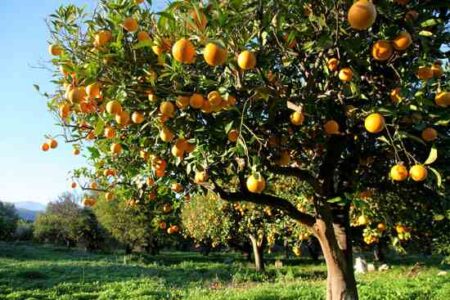Gotu kola (Centella asiatica) has been legendary in India and China for more than 2,000 years, where it’s considered one of the best herbs for promoting clarity, focus, and a peaceful, calm nature. This low-growing member of the carrot family is also known as “brahmi” or “Mandukaparni,” and is a tonic remedy for memory loss, stress, worry, and foggy thinking. In Ayurvedic medicine, gotu kola is used to increase memory, concentration, and comprehension. In the Himalayas, yogis use gotu kola as a meditation aid. Contemporary herbalists also use gotu kola as a wound healer, diuretic, antioxidant, nerve tonic, and antibacterial. Folklore tells us that daily ingestion of gotu kola keeps the mind fresh and promotes longevity and vitality. In Southeast Asia, gotu kola has long been credited as the source of elephants’ long life spans and exceptional memories.
Gotu kola is both a medicinal herb and a food plant. I’m especially fond of the botanicals that are culinary herbs — they’re generally the safest remedies, and can be ingested countless ways. You can take gotu kola as a tea, as a tincture, or in capsules, and if you’re a culinary creative, try sneaking the herb into broths, vinegars, smoothies, and vegetable juices. However, avoid gotu kola during pregnancy or when trying to conceive.
Gotu kola is native to the wetlands of Asia and Africa, and it’s grown in southern Asia as a medicinal potherb and salad green. The fresh leaves are often added to green drinks sold as health and energy tonics on the streets of many tropical Asian countries. The parsley-like flavor of juiced gotu kola pairs nicely with vegetable juices containing apple, ginger, lemon, and kale. Substitute concentrated gotu kola tea for the juice if you don’t have it growing fresh. An innovative way to incorporate gotu kola into your diet is to infuse the dried herb into herbal broths. Be sure to check with your health care provider before ingesting any new herb, paying special attention to any possible contraindications with medications.
An Herb to Promote Relaxation and Alertness
Natural healers and researchers debate whether gotu kola is a true adaptogen, which is a class of tonic herbs that help balance the body by supporting its ability to deal with physical and emotional stress learn more about adaptogens in Aviva Romm’s article. Tonic herbs are traditionally taken on a daily basis over a long period of time, as opposed to an herb that is only used as needed. In any case, gotu kola has a long history of usage as a tonic herb for promoting longevity, vigor, and equanimity. Folklore tells of a Chinese herbalist who lived to be more than 250 years old; legend says he retained his youthfulness and health, while outliving 23 wives, after ingesting gotu kola every day.
Outside of folklore, I find gotu kola to be one of the most useful herbs to help people feel energized and alert, but relaxed. In one 2008 placebo-controlled study, subjects — each approximately 65 years old — who took daily gotu kola capsules for eight weeks showed an increase in alertness and calmness, which in turn improved attention and working memory. In another placebo-controlled study, subjects who ingested a single 12-gram dose of gotu kola had significantly reduced startle responses in just 30 minutes, proving this herb’s anxiety-reducing activity.
A Traditional Remedy for Wounds and Injuries
Gotu kola has long been used to heal wounds, both internally and topically. Once famous for its use in treating leprosy in India, gotu kola is used today by herbalists to treat burns, minimize scarring, and promote tissue repair after injury or surgery. It appears to promote wound healing through its anti-inflammatory, antioxidant, and antibacterial qualities, in addition to stimulating keratinization (an essential process of nail and hair growth) and epidermal repair. One in vitro study isolated a major constituent in gotu kola, asiaticoside, and demonstrated the proliferation of fibroblasts, which are specialized cells responsible for producing and maintaining the structure of connective tissue. Fibroblasts are integral to wound healing.
In my herbal practice, I use gotu kola to promote tissue repair after surgery or injury, such as sprains, bone breaks, bruising, burns, and wounds. In fact, it’s the primary herb I recommend for this purpose. Gotu kola has another benefit in this healing arena: Its adaptogen-like qualities help with the emotional and physiological stresses of physical trauma. Calendula flowers (Calendula officinalis) also promote tissue repair and support the lymphatic system in fighting infection, so I frequently pair them with gotu kola.
In addition to its internal use in healing injuries, gotu kola can be used topically in the form of poultices, compresses, soaks, and infused oils. A compress is the simplest preparation: Brew a concentrated tea, strain it, and soak a clean washcloth in the tea when it’s still warm. Apply the cloth to the affected area several times a day. The proportions of plant material to water aren’t essential for this use — simply make the tea about three times as strong as you would make a tea to drink.
Gotu kola can also be applied topically to mollify a variety of skin conditions, including insect bites, eczema, psoriasis, and dry skin. A small number of people have reported contact dermatitis after topical use of the herb; if you have sensitive skin, a skin-patch test might be advantageous. I like to infuse the dry herb into sesame or coconut oil, which can be rubbed into the scalp to calm the mind, encourage sleep, and promote hair growth.
Growing Your Own Gotu Kola
I find that gotu kola is one of the most luscious herbal houseplants, and I enjoy its presence in my library, where it keeps me company throughout winter as I write. When the afternoon doldrums seize my creativity, I nibble on a leaf or two for renewed inspiration. It’s surprisingly easy to grow, both as a garden herb and as a potted plant. In Zones 7b and warmer, gotu kola can be grown outdoors as a perennial ground cover, and in colder climates, it can be grown as a frost-tender annual.
Gotu kola prefers moist soil with good drainage. If your soil is compact or clayey, add finished compost, coarse sand, or pine bark fines. In milder climates, you can grow gotu kola in full sun as long as the soil stays relatively moist. In hotter climates, plant gotu kola in partial shade, preferably with morning sun and afternoon shade. In my garden, I play herbal matchmaker by pairing gotu kola with purple passionflower (Passiflora incarnata). The passionflower trails up a tipi-shaped trellis, providing shade and retaining moisture for its creeping companion, which in turn suppresses weeds.
As a container plant, gotu kola prefers a shallow, broad pot with a saucer underneath to help keep it moist. You may need to water your plants every few days — they’ll readily wilt when they’re thirsty. In summer, I grow potted gotu kola on my front porch, which receives full morning sun and afternoon shade. Before the first frost, I bring the plants inside, placing them in front of an east-facing window.
Whether your plants are in the garden or in a container, harvest gotu kola with the “haircut method,” using kitchen scissors to trim most of its leaves. It will quickly grow a new batch of tender leaves, offering a few cuttings per growing season.
Relaxation and Clarity Tea Recipe
This blend is helpful for promoting relaxation throughout the day, as the herbs in it typically increase alertness. Tulsi, gotu kola, and milky oats are classic nerve tonics for assuaging anxiety, stress, and forgetfulness. Lemon verbena adds a splash of citrusy aroma and flavor, and is a traditional remedy for imparting calmness. Drink 1 to 3 cups a day. Yield: 1 liter.
• 3 tablespoons dried milky oat tops or oatstraw (Avena sativa)
• 1-1/2 tablespoons dried tulsi (Ocimum tenuiflorum)
• 1-1/2 tablespoons dried gotu kola (Centella asiatica)
• 2 teaspoons dried lemon verbena (Aloysia citriodora)
1. Bring 1 liter of water to a boil. Turn off the heat, add all the herbs, and cover for 30 minutes. Strain, and enjoy warm or at room temperature. Sweeten with honey or maple syrup, if desired.
Healing Herbal Broth Recipe
I help keep my family’s immune systems in tip-top shape by adding dried gotu kola to my herbal broths. This broth is high in minerals because of the seaweed and stinging nettle — fold it into chili, marinades, and stews to add the nutritional benefits of leafy greens to the diets of picky eaters. This broth is mild enough that you won’t notice the flavor of the herbs, especially if you add other classic stew ingredients, such as carrots, celery, or onion peels. The broth can also be used as a medicinal base for healing soups and stews made for recuperating from injury, childbirth, or surgery. Freeze unused portions into large ice cubes, which will be handy for adding a quick herbal boost to most any dish. Yield: 1 gallon.
• 1/4 cup dried astragalus root (Astragalus propinquus), cut and sifted
• 1 cup dried seaweed pieces, such as kombu, wakame, kelp, or alaria
• 1 cup dried stinging nettles (Urtica dioica)
• 1 cup dried shiitake mushrooms, whole
• 1/2 cup dried calendula flowers (Calendula officinalis)
• 1/2 cup dried gotu kola (Centella asiatica)
1. Add 1-1/2 gallons of water to a large stew pot. Add the astragalus, seaweed, nettles, and shiitakes. If you’d like, add your classic stock ingredients at this time. For those who prepare bone broth, add the bones to the pot with the herbs.
2. Bring to a boil and simmer for 4 to 6 hours.
3. Turn off the heat and add the calendula and gotu kola. Let steep, covered, for 30 minutes, and then strain, pressing out the plant material with a spoon and fine-meshed colander.
Juliet Blankespoor is the director and founder of the Chestnut School of Herbal Medicine. She offers numerous online courses on foraging, medicine-making, and herb cultivation.











